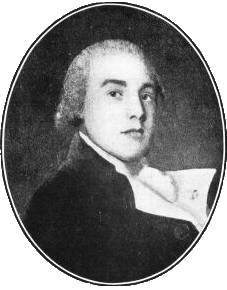
It is 220 years since George Bass and his crew of six rowed and sailed out of Sydney Harbour bound for our southern shores and on to Western Port, just shy of Port Phillip Bay and present day Melbourne.
Subscribe now for unlimited access.
or signup to continue reading
To commemorate this epic whaleboat voyage of discovery, which was supposed to last six weeks but took three months, it is worth reflecting on their journey.
In an open boat, locally built, 28 feet and seven inches long, they rowed out of Sydney Heads at 6pm on December 3, 1797.(HRA of NSW, Vol III).
Bass had asked Governor Hunter for a good boat, six volunteers from the King's ships and permission to examine the southern coast of NSW.
Hunter “accordingly furnished him with an excellent whaleboat, well fitted, victualled and manned to his wish...” (Estenden, p78).
Bass was to investigate the southern coast “as far as he could with safety and convenience go”. (HRA, p.220)
Clearing the heads and finding the wind from the northeast, they set the sails and headed south.
That first night they sheltered at Little Bay, 15 miles from Port Jackson. Next day they passed Wattamolla and went onto Kiama and entered Jervis Bay on December 10, 1797, where they spent four days.
For the next five days, December 14-18, 1797, they took advantage of favourable winds, rowing when the breeze failed or pushing through the surf in order to land and explore on foot.
Bass confused Durras Inlet with Batemans Bay and in his journal recorded, “..Saturday 16th. PM. At 7 anchored for the night under the lee of a point. AM. Daylight, sailed with an air at west. At 6 the wind blew round to the south, bore up, and laid the boat upon the end of a little beach under the same point we had started from". (Bass's Journal p 8-9)
Bass and his crew had sailed into the cove at Potato Point and the next morning hit a big southerly and beached at Jemison Beach. (Lipscombe, Australia Shores, p145)

They spent the day walking the hinterland and covered 12 miles during a period of drought. The following day, after passing Montague Island, they reached the Pambula River mouth and by December 19 had Twofold Bay in sight. Favourable winds and conditions must have prevailed.
According to Lipscombe (p.156): “ ..rounding Cape Howe, Bass began his journey west along the Victorian coast on December 21, 1797 and on to Wingan Inlet where they remained because of a gale until December 31, 1797.”
Bass's belief that a strait separated the mainland from Van Diemen's Land was backed up by his astute observations of the rapid tides and long south western swells at Wilson's Promontory and Western Port, where they spent the next several weeks.
It wasn't until October 1798, that Bass, on another voyage with his legendary friend Matthew Flinders, would set sail to prove the existence of a strait, now called Bass Strait, by circumnavigating Van Diemen’s Land.
In conclusion and to reinforce the character of Bass, I'd like to quote from Matthew Flinders, Voyage to Terra Australis, (cited in Estenden, p91).
“Bass's voyage expressly undertaken for discovery in an open boat, and in which six hundred miles of coast, mostly in boisterous climate, was explored, has not, perhaps, it's equal in the annals of maritime history.”
Born in Lincolnshire, England in 1771, Bass was last seen on February 5, 1803 just before he left Port Jackson on a business trip/ entrepreneurial voyage. What happened to him? That is an open question that requires detailed analysis another time.
George Bass is a much undervalued explorer in Australian history. He was trained as a surgeon, turned sailor, explorer and entrepreneur. His legacy includes the contacts he had with our coastline, its hinterland and people, 220 years ago.
There is a plaque commemorating Bass at Flinders in Western Port, Victoria. Upon his return to Sydney his whaleboat was beached at Sydney Cove and became an object of popular admiration and one story suggests the timber was used to make snuff boxes. Maritime heritage lost forever.
I wish all my readers a safe and happy festive season and 2018. For those participating in the 2018 George Bass Surfboat Marathon, the world's longest at 190 kms in seven days, I hope you enjoy favourable winds and friendly swells as you head south.
Bill Baker studied history at ANU and later at Wollongong University and the University of Canberra. He taught for 10 years in high schools and then 20 years in TAFE and a couple of years in the teacher training program at UC. He retired from full time teaching at the end of 2004 but maintains a continuing interest in history, geography and writing. His other hobbies include surfing, golf and the fine life of retirement on the South Coast of NSW. He is a member of the Canberra and District Historical Society, a Life Member of the Royal Life Saving Society and a permanent friend of the Australian Institute of Sport.

